#an A330 X A330 MRTT
Explore tagged Tumblr posts
Text
You know. I'm about to legit make 2 new OCs just because i want a commercial x military plane dynamic couple.
24 notes
·
View notes
Text

Now that’s a tanker! Airbus A330 MRTT = 💪
#NKAWTG
@Thenewarea51 via X
#airbus a330#tanker#b-2a spirit#northrop grumman#bomber#aircraft#stealth#aviation#usaf#nuclear weapons
19 notes
·
View notes
Text
INDUSTRY WATCH: Who's Who And What's What In The Defence Sector
(Volume 24-10)
By David Pugliese
Counter-jamming systems from NovAtel Inc. of Calgary have been selected by the federal government for Canadian Army light armoured vehicles (LAVs).
The federal government has published an Advance Contract Award Notice, which is to inform other suppliers that the NovAtel equipment will be purchased unless there are any firms that can make the same systems.
The Department of National Defence has an initial requirement to buy 52 global positioning system (GPS) anti-jam antennas. The equipment will be outfitted on the LAV Observation Post Vehicle. The initial requirement includes the associated software.
“The GPS Anti-Jam Antenna must be capable of simultaneously nulling up to 6 individual jamming sources and be compatible with the Canadian Army’s inventory of 12,000 Defense Advanced GPS Receiver (DAGR) and LAV OPVs,” the government noted. Up to 50 additional GPS anti-jam antennas could be purchased in the future, it added.
The LAV Observation Post vehicle is expected to operate in forward positions, a situation that would “increase the likelihood that it will come under electronic attack (including GPS jamming) from opposing forces. Lack of anti-jam capability also makes GPS receivers more susceptible to potentially more dangerous spoofing attacks.”
Airbus Defence and Space has received an order for five Airbus A330 Multi-Role Tanker Transports (MRTT) from Europe’s organization for the management of cooperative armament programmes, OCCAR (Organisation for Joint Armament Cooperation). The order is on behalf of NATO Support & Procurement Agency (NSPA) and funded by Germany and Norway.
It follows the announcement on June 29 of a Memorandum of Understanding under which the two nations would join Netherlands and Luxembourg in the European/NATO Multinational Multi-Role Tanker Transport Fleet (MMF) program.
A contract amendment signed at the OCCAR headquarters in Bonn, Germany adds five aircraft to the two previously ordered by Netherlands and Luxembourg and includes four additional options to enable other nations to join the grouping. It also includes two years of initial support.
The program is funded by the four nations who will have the exclusive right to operate these NATO-owned aircraft in a pooling arrangement. The aircraft will be configured for in-flight refuelling, the transport of passengers and cargo, and medical evacuation flights.
The first two aircraft have already been ordered to be delivered from Airbus Defence and Space’s tanker conversion line at Getafe, near Madrid, and all seven are expected to be handed over between 2020 and 2022.
Rheinmetall will soon be modernizing part of the Bundeswehr’s fleet of Leopard main battle tanks (MBTs), implementing a comprehensive array of upgrade measures, the company has announced.
The upgrade program will bring 104 Leopard 2 tanks up to state-of-the-art design status. The first serially retrofitted Leopard 2 A7V tanks will reach the German Army starting in 2020. Rheinmetall will be transforming a total of 68 Leopard 2A4, 16 Leopard 2A6 and 20 Leopard 2A7 main battle tanks, bringing them up to A7V standard, the firm noted.
In addition, Rheinmetall will be supplying the new L55A1 gun for the 68 Leopard 2A4 MBTs to be modernized. These tanks will therefore be able to fire the latest generation of armour-piercing ammunition in the upper pressure zone. All 104 Leopard 2A7V tanks will be capable of using Rheinmetall’s new programmable DM11 multipurpose round.
More than 3,300 people attended Seaspan’s Vancouver Shipyards’ open house in early October. During the event, attendees received an up-close look at what Seaspan is calling the “most modern facility of its kind in North America.” They also saw the unveiling of the first vessel to be designed and built under the National Shipbuilding Strategy (NSS) — the Canadian Coast Guard’s first Offshore Fisheries Science Vessel (OFSV), the Sir John Franklin.
“Today is a historic day for the women and men of Seaspan Shipyards as we deliver on our commitments to the Canadian Coast Guard and Royal Canadian Navy,” Brian Carter, President & CEO – Seaspan Shipyards, told the audience. “In the unveiling of the first Offshore Fisheries Science Vessel, we are affirming our long-term commitment to Canada and our leading role in the growth of a West Coast centre of excellence in shipbuilding and ship repair.”
Saab intends to establish a manufacturing and production centre in the U.S. to handle the Swedish company’s work on the Boeing-Saab T-X trainer aircraft.
Both firms have set a goal of having more than 90 per cent of the T-X design built in the U.S., said Boeing Defence President Leanne Caret and Saab AB President and CEO Haken Buskhe. “Our T-X is designed and purpose-built for the U.S. Air Force training program, for today and for the future. Therefore, the aircraft, including our workshare, should also be manufactured here in the United States,” Buskhe recently told an audience at the U.S. Air Force Association’s annual conference.
QinetiQ Target Systems has received a new order from the Royal Canadian Navy to deliver more than 40 units of Hammerhead unmanned surface vehicle (USV) targets and several payloads. The latest $4.7-million order is part of an existing $35-million framework contract with the Department of National Defence, the firm noted.
The five-year contract was originally awarded in May last year and includes the supply of surface and aerial target systems. Hammerhead targets are equipped with a large variety of threat-emulating payloads and allow ship operators to train against piracy threats by simulating fast inshore attack craft. The targets can be controlled in large swarms in order to adequately replicate a coordinated attack by multiple naval ships.
“The Hammerhead is continually proving to be a cost-effective and high-performing surface target for the RCN and several other customers around the world,” QinetiQ Target Systems Managing Director Peter Longstaff said in a statement.
Héroux-Devtek Inc. has announced an agreement to acquire Compañia Española de Sistemas Aeronauticos, S.A. (“CESA”), a subsidiary of Airbus. The deal is worth $205-million.
“The acquisition of CESA marks a pivotal moment in Héroux-Devtek’s international expansion,” Gilles Labbé, President and Chief Executive Officer of Héroux-Devtek, said in a statement. “This transaction will allow us to increase our presence with Airbus, hence giving us better access to one of the largest aircraft manufacturers in the world.”
Headquartered in Madrid, Spain, CESA is a leading European provider of fluid mechanical and electromechanical systems for the aerospace industry. Its main product lines include landing gear, actuation and hydraulic systems.
0 notes
Text
Royal Air Force
Royal Air Force Founded: 1918 Country: United Kingdom Allegiance: British Monarch Type: Air force Role: Aerial warfare Size: 50,000 Regular 5,000 RAuxAF 15,000 Air Force Reseve Headquarters: Air Force HQ, TBA Motto(s) Latin: Per Ardua ad Astra
“Through Adversity to the Stars” March: Royal Air Force March Past Website: raf.mod.uk Commanders Chief of the Air Staff: Assistant Chief of the Air Staff: Insignia Ensign Logo Roundels Fin flashes Pilot’s brevet Aircraft flown Air defence and strike aircraft 210 x Eurofighter Typhoon 140 x Lockheed Martin F-35B Lightning II (Joint operated by Fleet Air Arm) 60 x Lockheed Martin F-35A Lightning II - 220 x New Unknown New Multirole combat aircraft 130 x New Unknown New Air superiority fighter 110 x New Unknown Strike fighter Airborne early warning and reconnaissance aircraft 12 x Boeing P-8 Poseidon (MPA) 14 x Airbus A319 MPA/MMA (MPA) - 12 x New Unknown Airborne early warning and control (AEW&C) 12 x New Unknown airborne battlefield and ground surveillance aircraft 14 x New Unknown Reconnaissance aircraft 12 x New Unknown Electronic warfare aircraft (EW) Transport and air-to-air refuelling aircraft 28 x Airbus A400M Atlas 20 x Boeing C-17 Globemaster III 30 x Lockheed Martin C-130J Super Hercules 10 x Alenia C-27J Spartan 18 x Airbus A330 MRTT Voyager 10 x Boeing KC-46 Pegasus 12 x Bombardier CSSeries Military 2 x Airbus A340-600 (former Virgin Atlantic Airways) VIP Transport 1 x Airbus A350-900 XWB 1 x Airbus A350-800 XWB 2 x Bombardier CS300 2 x Bombardier CS100 2 x Gulfstream G650ER 2 x Cessna Citation Hemisphere 4 x Bombardier Challenger 650 2 x Pilatus PC-24 2 x AgustaWestland AW101 VVIP 4 x Airbus Helicopters H160 Trainer 85 x BAE Hawk T2 8 x Honda Jet 6 x Embraer Phenom 100 45 x Beechcraft T-6 Texan II 45 x Pilatus PC-21 120 x Grob G 120TP Helicopter 60 x Boeing Chinook HC Mk6 40 x Bell Boeing V-22 Osprey 35 x AgustaWestland AW149 20 x Bell UH-1Y
0 notes
Text
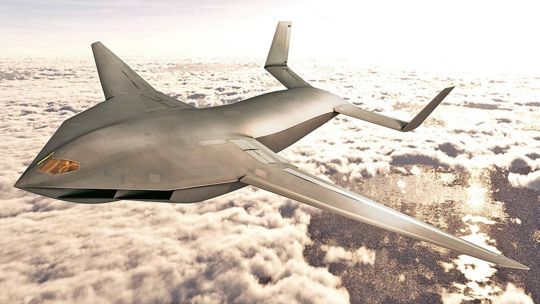
USAF launches new stealth tanker plane program, with delivery projected for 2040
Fernando Valduga By Fernando Valduga 02/03/2023 - 20:56 in Military
Lockheed Martin's stealth replenishing aircraft concept.
The U.S. Air Force launched its search for the Next Generation Air Refuelling System (NGAS), a stealth tanker project intended to deliver its first aircraft around 2040, with a request for information (RfI) to the industry on January 31.
The new tanker plane should be able to survive in disputed airspace, but the service is open to all ideas about its size and performance.
Contractors were invited to send ideas to NGAS that will be considered in an Alternative Analysis in October, according to the announcement on SAM.gov. Responses to RFI must be delivered on March 2.

KC-135 Stratotanker.
RFI marks the formal beginning of what was previously called "KC-Z". The KC-X program has become the KC-46 that is now being acquired; the KC-Y has become the so-called "bridge tanker aircraft" still in definition, and the KC-Z the U.S. Air Force is now referred to as NGAS, or "increment three" of its three-phase effort to recapitalize the tanker
The Defense Innovation Unit and USAF are already analyzing concepts for a future mixed-wing tanker plane, but the January 31 request specifically leaves the configuration open.
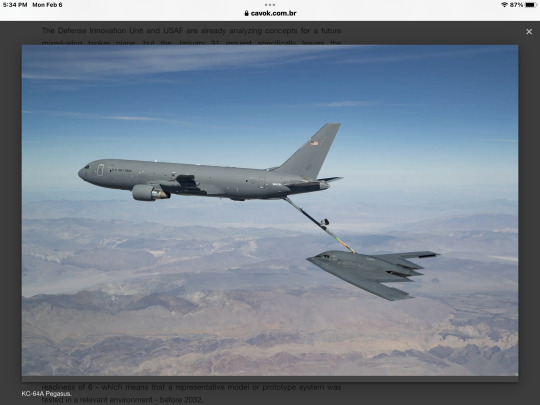
KC-64A Pegasus.
The U.S. Air Force “is interested in innovative solutions in all size and performance classes that can meet the stressful requirements of the mission” of providing fuel in the disputed airspace, the announcement said. The speed of the aircraft concepts presented "must be compatible with modern receivers".
The concepts presented may have new technologies or operational concepts, but the U.S. Air Force said that all the risk needs to be solved for a level of technological readiness of 6 - which means that a representative model or prototype system was tested in a relevant environment - before 2032.

Lockheed Martin bridge tanker proposal based on the A330 MRTT.
U.S. Air Force Secretary Frank Kendall, speaking in a webinar of the Foreign Relations Council on January 11, said that the threat posed by China is moving the USAF away from traditional tankers, in which a commercial aircraft is adapted for a mobility aircraft.
"The threat is taking this freedom from us," he said, adding that with new cargo aircraft and tank projects, the USAF needs to place "a high premium on the ability to survive." Chinese aircraft and missiles and other opponents can track tankers and shoot at them long-range ones, forcing the Air Force to advance towards survival concepts, he said. The new replenisher will have to "go beyond" traditional concepts and "live in an environment where the current fleet does not need to work".
In June 2022, the U.S. Air Force sent a request to the "Advanced Air Refuelling Systems Family", a two-way program that seeks a continuation of the KC-46 with additional features, such as a communications node and advanced navigation systems, while separately seeking an advanced replenisher with survival capacity to operate near enemy airspace. NGAS is now defined as the duplicate.

Three current USAF refuelling aircraft, KC-10, KC-135 and KC-46.
Kendall indicated that he thinks that an improved KC-46 will probably be the solution to the requirements of the "bridge tanker", consistently minimizing the idea of a competition.
A proposed amendment to the 2023 fiscal defense budget that requires a replenishment competition has not reached the final bill, but supporters said they will try again this year.
The request for information to NGAS instructs the industry to provide detailed performance characteristics of potential aircraft, including size and weight, "off and landing, ascent, cruise flight and representative mission performance". The U.S. Air Force also wants to know if the proposed aircraft can use “regional or improvised aerodromes or other non-traditional bases”.
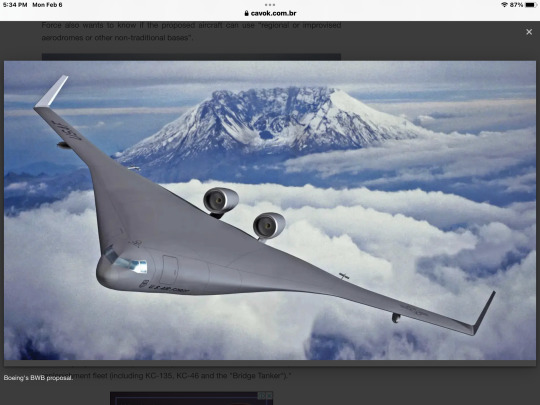
Boeing's BWB proposal.
The new replenishers should be able to receive fuel in the air, as well as provide it to other aircraft. Respondents should also identify the level of maturity of projects, which are the areas of greatest risk and how contractors would mitigate them in a development program. The authorities want "cronograms to put into practice" the proposed solutions.
Respondents should explain how their solutions can "change the way air replenishment operations would be performed", what operational or support changes would be necessary to introduce these new concepts, and how "your proposed solution [will] increase, improve or expand the current and planned capabilities of the replenishment fleet (including KC-135, KC-46 and the "Bridge Tanker")."

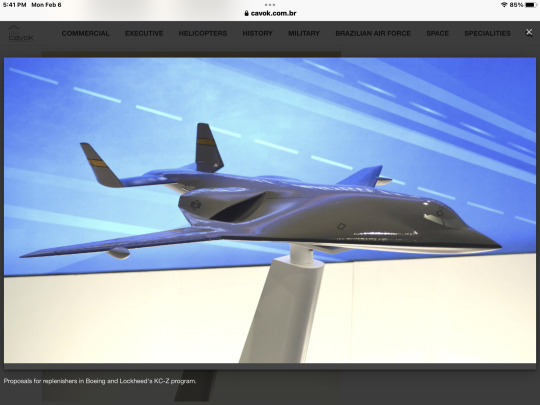
Proposals for replenishers in Boeing and Lockheed's KC-Z program.
The concepts should also address how they will support unmanned air systems and “acondend anticipated threats ... within 2040”. Industry respondents also need to submit their ideas on how they will combat cyber threats to their aircraft concepts and, in general, identify “high-level cost responsibilities” for any new technologies presented. Potential bidders also need to declare what types of engines they would put on their aircraft and what kind of fuel economy they can obtain compared to current tanker planes.
The program will make use of digital modeling and simulation techniques and all proposals must use a modular architecture of open systems.

Agile replenisher model under test in the wind tunnel.
The U.S. Air Force also wants to know if proponents can offer “ innovative arrangements for training traditional military teams with non-military contractors to gain a mix of experience in advanced aerodynamic configuration design, lean programs, and rapid development and manufacturing of structures.” The service is looking to expand its supplier base to increase competition and avoid the "supplier blocking", in which a particular contractor enjoys a virtual monopoly of updates and software.
The industry has already offered a variety of approaches to future tanker planes, ranging from combined wing body concepts to small highly stealth tanker planes that could penetrate the heavily defended airspace along with attack aircraft.
Last month, at the convention and annual exhibition of the American Institute of Aeronautics and Astronautics, Boeing unveiled a stealth-looking hybrid wing body concept for mobility applications with a butterfly empenage and built-in engines. Lockheed Martin also showed stealth BWB-type concepts for future air transport planes and replenishers.
Kendall said that there is no commercial concept of combined wing body that the U.S. Air Force can take advantage of "yet", but the service is analyzing these concepts with the IUD because commercial variants can also significantly reduce the fuel consumption of the air and freight industry.
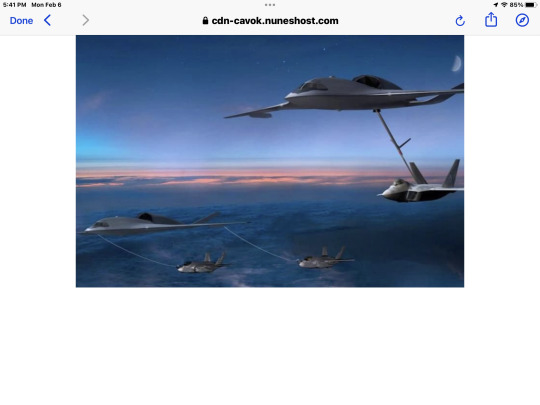
Kendall also designated air transport as one of the three "transversal" facilitating mission areas that touch all the activities of the U.S. Air Force - the other two are electronic warfare and ammunition - and underpin all its seven "operational imperatives". Each facilitator received an operational and acquisition co-leader to facilitate the development of capacity scripts.
Source: Air Force & Space Magazine
Tags: Military AviationKC-ZUSAF - United States Air Force / US Air Force
Fernando Valduga
Fernando Valduga
Aviation photographer and pilot since 1992, he participated in several events and air operations, such as Cruzex, AirVenture, Dayton Airshow and FIDAE. He has works published in specialized aviation magazines in Brazil and abroad. He uses Canon equipment during his photographic work in the world of aviation.
Related news
MILITARY
Canada deploys CP-140 Aurora patrol aircraft to support Haiti
06/02/2023 - 16:00
VANT - UAV
GA-ASI wins contract to develop new unmanned air system for USAF
06/02/2023 - 14:00
MILITARY
US finances purchase of Polish M28 Block 5 aircraft for Nepal
06/02/2023 - 11:00
MILITARY
US Ospreys are temporarily grounded
06/02/2023 - 09:04
MILITARY
Australia increases combat reach of Growler electronic attack aircraft fleet
06/02/2023 - 08:19
BRAZILIAN AIR FORCE
FAB: Black Hawk H-60 Helicopter plays a key role in Operation Yanomami
06/02/2023 - 08:06
4 notes
·
View notes
Text

KAI reveals the concept of MC-X transport aircraft
Fernando Valduga By Fernando Valduga 09/23/2022 - 09:00 in Military
Korea Aerospace Industries (KAI) took the opportunity at the DX Korea 2022 exhibition, held in Goyang, from September 21 to 25, to reveal a model of its new turbofan-powered multifunction transport aircraft, provisionally called MC-X.

Although it is currently an unsolicited proposal, a KAI employee said the company is under discussion with the Air Force of the Republic of Korea (RoKAF) to understand its future transportation requirements. Currently, the service operates 12 C-130H/C-130H-30 turboprop tactical transport aircraft and four Lockheed Martin C-130J-30, four Airbus A330 Multi Role Tanker Transport (MRTT) that can perform air-to-air refueling and personnel/cargo transport, and about 20 CN-235-100/220 aircraft configured for transport missions.
youtube
"We believe that the MC-X will be able to go into production in early 2030 using our current development capabilities," the officer said, adding that the army and navy of the Republic of South Korea can also be potential customers with specialized capabilities, such as special forces and maritime patrol. for their respective operational requirements.

According to the company's specifications, the MC-X should be a twin-engine aircraft - about 40.3 m long, 13.5 m high and 41.1 m wingspan - with a maximum take-off weight of 92,000 kg and a payload capacity of up to 30,000 kg. It will be equipped with 30,000 lb class turbofan engines that should offer a maximum speed of 926 km/h and a cruise autonomy of 7,000 km.
Other planned features include an aircraft self-defense system and an automated loading system.

The employee noted that the goal of KAI is to develop a next-generation multifunction transport aircraft that is positioned in terms of size and capacities between the C-130 and A400M platforms. He added that although the company is initially planning to develop and manufacture the aircraft as an internal project, it is possible that a foreign partner of the industry can be sought, depending on subsequent technical evaluations.

Although it has not provided more details about international partnerships, AMR understands that Boeing and Embraer can be potential candidates, given their experience in the development of successful military transport aircraft with turbofans.

The MC-X could also potentially be offered to the export market, which would put it to compete with the C-2 'Blue Whale', a medium-sized military transport aircraft with a dual turbofan, developed by the Japanese Kawasaki Heavy Industries (KHI) and already in service with the Japanese Air Self-Defense Force (JASDF).
Tags: Military AviationKAI - Korea Aerospace Industries Ltd.MC-X
Previous news
EC-130J Commando Solo "Psychological War" aircraft performs final transmission
Next news
De Havilland of Canada will build a totally new aircraft factory
Fernando Valduga
Fernando Valduga
Aviation photographer and pilot since 1992, he has participated in several events and air operations, such as Cruzex, AirVenture, Dayton Airshow and FIDAE. It has works published in specialized aviation magazines in Brazil and abroad. He uses Canon equipment during his photographic work in the world of aviation.
Related news
BRAZILIAN AIR FORCE
IMAGES: Modernized T-27 aircraft arrives at DCTA
09/24/2022 - 15:00
BRAZILIAN AIR FORCE
FAB Remotely Piloted Aircraft performs first transfer flight
09/24/2022 - 12:30
MILITARY
IMAGES: KAI displays Boramae's KF-21N model for operation on aircraft carriers
09/24/2022 - 11:00
BRAZILIAN AIR FORCE
FAB commander meets with representatives of Boeing and SAAB
09/24/2022 - 10:27
Australia's newest F-35A Lightning II aircraft, A35-053 and A35-054, arrive at the RAAF Base in Williamtown. (Photo: Cape Craig Barrett / Commonwealth of Australia, Department of Defense)
MILITARY
RAAF receives four new F-35A Lightning II aircraft
23/09/2022 - 19:00
MILITARY
USAF wants to replicate the Heavy Airlift Wing model in Africa using C-130 Hercules aircraft
09/23/2022 - 17:42
homeMain PageEditorialsINFORMATIONeventsCooperateSpecialitiesadvertiseabout
Cavok Brazil - Digital Tchê Web Creation
Commercial
Executive
Helicopters
HISTORY
Military
Brazilian Air Force
Space
Specialities
Cavok Brazil - Digital Tchê Web Creation
2 notes
·
View notes
Text

NATO Real Thaw Exercise, held in Portugal, recorded through Cavok's lenses
Filipe Barros By Filipe Barros 07/17/2022 - 11:06 PM in Military, Military Operations
The Portuguese Air Force held the annual Real Thaw 2022 exercise, between June 26 and July 8, at No. 11 Air Base in Beja. We were at the scene and showed here a selection of beautiful images of the meeting of aircraft from various NATO air forces.


The Portuguese military committed themselves to creating an operational environment where participants could carry out a high-level tactical exercise, maximizing integration, interoperability and learning, continuing to prepare and qualify their forces to fully fulfill the mission and ensuring the public interest in international missions assigned to them, with maximum safety and efficiency.


This multidisciplinary exercise aims to enhance joint training and provide participants with a wide range of tactical missions, in order to share knowledge, increase integration, promote innovation and strengthen ties between NATO partners.


Real Thaw 2022 allowed you to evaluate and certify the operational capabilities of the Portuguese Air Force and train its assets with NATO allies. Among the missions carried out in the exercise are: Offensive and Defensive Air Combat, Protection of high-value air assets (HVAA-Protection), Air Transport Escort, Support for Special Operations Forces, Convoy/helicopter Escorts, Combat Search and Rescue (CSAR) and Medical Evacuation (MEDEVAC).


This exercise prepared the military of the Air Force, Navy and Army, and the participating countries, to act in joint operations, enhancing interoperability among all, offering participants a unique opportunity to plan and execute missions, with the aim of integrating and synchronizing different domains to solve a tactical problem.

The scenario is only possible due to the spirit of resilience and commitment of the military and civilians of the Air Force, who continue to fulfill their mission with rigor and quality.
This year it was possible to photograph through the skies of Portugal the Portuguese aircraft F-16M, C-130H, C-295M, AW119 "Koala", P-3C CUP+ Orion, EH-101 Merlin and aircraft from the other participating countries, such as: Rafale from France, F-16CJ from the USA, EF-
This is the 13th edition of the international exercise organized by the Portuguese Air Force, since the first edition in 2008.
Participants with Real Thaw 2022 aircraft in Beja:
Portugal:
10 x F-16M
2 x AW119
1 x EH-101 Merlin
1 x C-130H
1 x C-295M
1 x P-3C CUP+ Orion
Belgium:
6 x F-16M
France:
5 x RAFALE
1 x E-3F
1 x A330 MRTT
Spain:
5 x EF-2000
USA:
18 x F-16CJ
1 x KC-135
Tags: Military AviationJoint ExercisesFAP - Portuguese Air ForceNATO - North Atlantic Treaty OrganizationReal Thaw
Previous news
IMAGES: "Black Eagles" fly with the "Red Arrows" and receive awards at RIAT 2022
Next news
Eve presents eVTOL booth for the first time at the Farnborough Airshow
Filipe Barros
Filipe Barros
Related news
MILITARY
Russia apparently accidentally shot down its new Su-34M jet
07/18/2022 - 9:05 PM
AIR SHOWS
IMAGES: How was the participation of FAB and KC-390 in RIAT 2022?
07/18/2022 - 7:30 PM
FARNBOROUGH
Royal Moroccan Air Force orders a fleet of Airbus H135 helicopters
07/18/2022 - 7:00 PM
FARNBOROUGH
First flight of the British FCAS demonstrator should take place by 2027
07/18/2022 - 6:23 PM
Norwegian F-35 fighter arriving in Cameri. (Photo: Italian Ministry of Defense)
MILITARY
Italy receives the first international F-35 at its Cameri maintenance center
07/18/2022 - 4:00 PM
MILITARY
U.S. Marine Corps orders the MQ-9A ER drone
07/18/2022 - 2:00 PM
HOME Main Page Editorials Information Events Collaborate SPECIALS Advertise About
Cavok Brasil - Digital Tchê Web Creation
Commercial
Executive
Helicopters
History
Military
Brazilian Air Force
Space
SPECIALS
Cavok Brasil - Digital Tchê Web Creation
3 notes
·
View notes